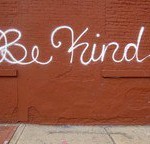Archive for November, 2011
Fine! Whatever! 8 Passive Aggressive Phrases Everyone Should Know
809Do you ever feel like you are riding on an emotional roller coaster with your child? Is your little one friendly and sweet one day, then sulky and withdrawn the next? Does your teenager consistently procrastinate, postpone, stall and shut down any emotionally-charged conversation? Do you, as a parent, ever resemble that same portrait? If you answered “yes” to any of these questions, chances are good that passive aggressive behavior has found a way into your home and family.
Check out my article in the Huffington Post Parents section to learn about eight of the most common passive aggressive phrases and to figure out if “sugarcoated hostility” exists in your home and family.
http://www.huffingtonpost.com/signe-whitson/passive-aggressive-phrases_b_1116025.html
Great Stop-Bullying Exercise for School Counselors & Teachers
312A teacher in New York was teaching her class about bullying and gave them the following exercise to perform. She had the children take a piece of paper and told them to crumple it up, stomp on it and really mess it up, but do not rip it. Then she had them unfold the paper, smooth it out and look at how scarred and dirty it was. She then told them to tell it they’re sorry. Now even though they said… they were sorry and tried to fix the paper, she pointed out all the scars they left behind. And that those scars will never go away no matter how hard they tried to fix it. That is what happens when a child bullies another child, they may say they’re sorry but the scars are there forever. The looks on the faces of the children in the classroom told her the message hit home. Copy and paste if you would like to stop bullying.
